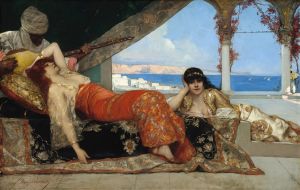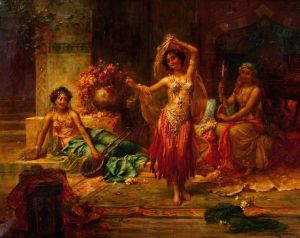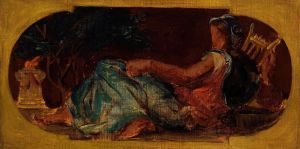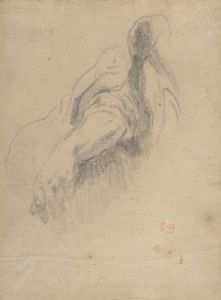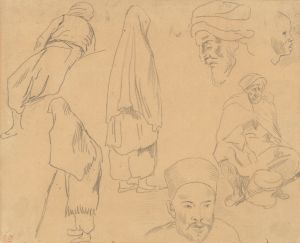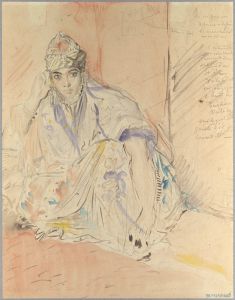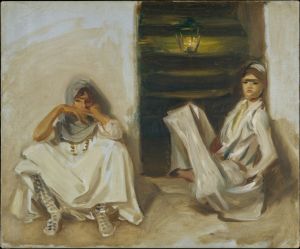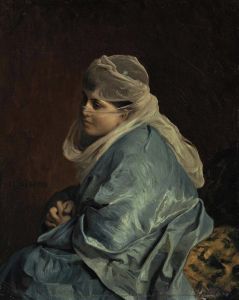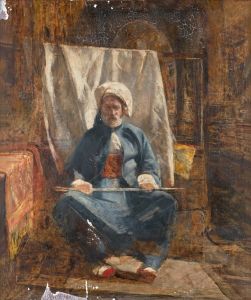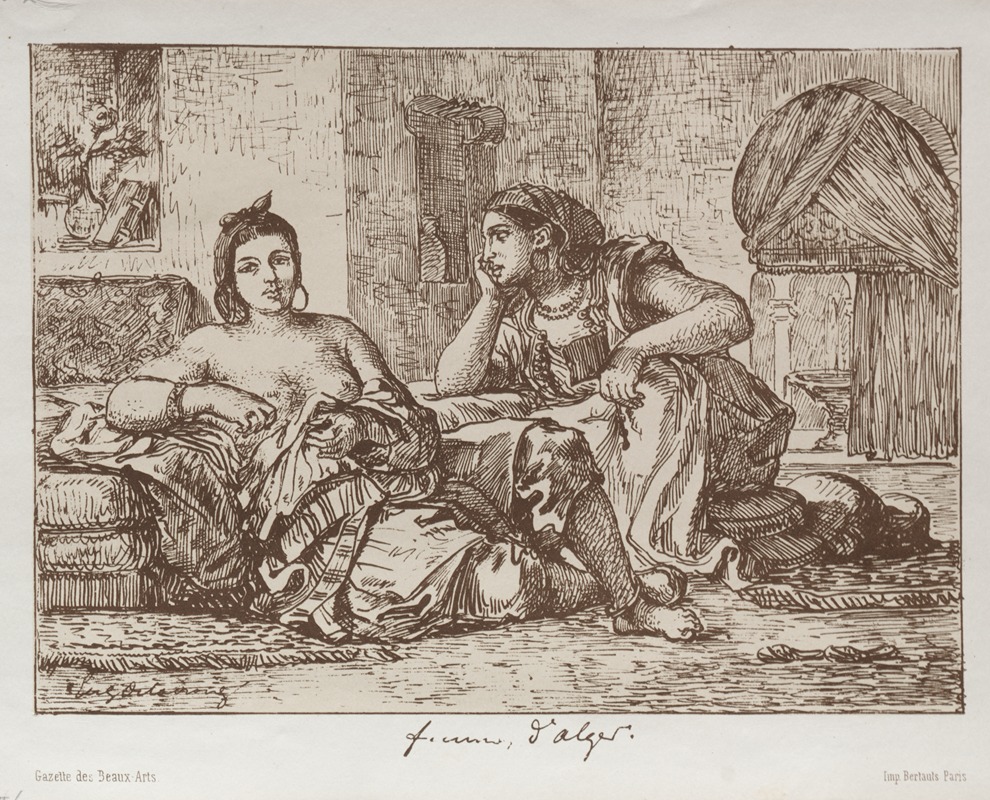
Women of Algiers
A hand-painted replica of Eugène Delacroix’s masterpiece Women of Algiers, meticulously crafted by professional artists to capture the true essence of the original. Each piece is created with museum-quality canvas and rare mineral pigments, carefully painted by experienced artists with delicate brushstrokes and rich, layered colors to perfectly recreate the texture of the original artwork. Unlike machine-printed reproductions, this hand-painted version brings the painting to life, infused with the artist’s emotions and skill in every stroke. Whether for personal collection or home decoration, it instantly elevates the artistic atmosphere of any space.
"Women of Algiers" is a renowned painting by the French Romantic artist Eugène Delacroix, completed in 1834. This work is celebrated for its vivid depiction of a harem scene, a subject that fascinated many European artists of the 19th century, who were intrigued by the exoticism of the Orient. Delacroix's painting is particularly significant as it reflects both his personal experiences and the broader cultural interests of his time.
Eugène Delacroix was inspired to create "Women of Algiers" following his visit to North Africa in 1832. This journey, which included stops in Morocco and Algeria, had a profound impact on Delacroix, providing him with a wealth of visual and cultural material that would influence his work for years to come. The trip was part of a diplomatic mission, but for Delacroix, it was also an opportunity to explore a world that was vastly different from his own. The vibrant colors, diverse cultures, and unique landscapes of North Africa captivated him, and he sought to capture these elements in his art.
"Women of Algiers" portrays a group of women in a richly decorated interior, which Delacroix imagined as a harem. The painting is notable for its use of color and light, which Delacroix employed to create a sense of warmth and intimacy. The women are depicted in luxurious garments, surrounded by ornate furnishings, which add to the exotic atmosphere of the scene. Delacroix's attention to detail is evident in the intricate patterns of the textiles and the subtle play of light and shadow across the figures.
The composition of the painting is carefully balanced, with the figures arranged in a way that draws the viewer's eye around the scene. Delacroix's use of color is particularly striking; he employs a rich palette of reds, blues, and golds to convey the opulence of the setting. This use of color was influenced by his observations during his travels, where he was struck by the intensity and variety of hues in the North African environment.
"Women of Algiers" was exhibited at the Salon of 1834, where it received mixed reviews. Some critics praised Delacroix's bold use of color and his ability to convey the exotic allure of the Orient, while others were less enthusiastic about the subject matter. Despite the initial mixed reception, the painting has since become one of Delacroix's most celebrated works and is considered a masterpiece of Orientalist art.
Today, "Women of Algiers" is housed in the Louvre Museum in Paris, where it continues to be admired by visitors from around the world. The painting is an important example of Delacroix's ability to blend his Romantic sensibilities with his fascination for the exotic, resulting in a work that is both visually stunning and culturally significant. Through "Women of Algiers," Delacroix not only captured the allure of a distant world but also contributed to the broader 19th-century European interest in Orientalism, which sought to explore and represent the cultures of the Middle East and North Africa in art and literature.






